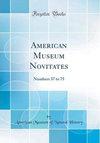晚白垩世天使鲨一新属;下蹲科),并对下蹲科系统发育的评述
IF 1.1
3区 环境科学与生态学
Q3 BIODIVERSITY CONSERVATION
引用次数: 3
摘要
在阿拉巴马州达拉斯县的晚白垩世阿拉巴马大学哈雷尔站古生物遗址(HSPS)中,描述了三维晚白垩世elasmobranch内骨骼元素(包括腭方体、角状体、脑壳碎片和一系列前椎骨)。根据几个独特的形态特征,该材料被指为现存的板颌科蹲蝇科。它还展示了任何现代或化石下蹲物种或已灭绝的晚侏罗世下蹲物种所没有的特征。一个新的属和种被建立,尽管有一些不确定的潜在的同义词与现有的名义物种先前建立在孤立的化石牙齿(奇怪的是,没有蹲下人的牙齿从HSPS记录)。初步的系统发育分析表明,新属落在蹲属茎上,系统发育上更接近于蹲属而不是假冠属。新属的颅椎关节表现出被认为与现代蝙蝠兽(鳐和鳐)趋同的特征,包括后基颅和第一椎体之间缺乏接触,以及一条不能到达副基颅的脊索管。早侏罗世的一种未描述的蝙蝠形提供了支持证据,证明蹲鲨类和蝙蝠形的颅椎关节的相似性是趋同的,而不是突触性的(如“睡角鲨类”),其中一个枕骨半中心与第一个椎体关节相连,就像所有现代鲨鱼类(蛛形)的蛛形一样。相反,化石表明,在前中央减少和枕骨半中心丢失之前,由前基腹软骨和前基背软骨融合进化而来的,而不是像催眠角鲨假说所预测的那样,在此之后。本文章由计算机程序翻译,如有差异,请以英文原文为准。
A New Genus of Late Cretaceous Angel Shark (Elasmobranchii; Squatinidae), with Comments on Squatinid Phylogeny
ABSTRACT Three-dimensional Late Cretaceous elasmobranch endoskeletal elements (including palatoquadrates, ceratohyals, braincase fragments, and a series of anterior vertebrae) are described from the Late Cretaceous University of Alabama Harrell Station Paleontological Site (HSPS), Dallas County, Alabama. The material is referred to the extant elasmobranch Family Squatinidae on the basis of several distinctive morphological features. It also exhibits features not shared by any modern or fossil Squatina species or the extinct Late Jurassic squatinid Pseudorhina. A new genus and species is erected, despite there being some uncertainty regarding potential synonymy with existing nominal species previously founded on isolated fossil teeth (curiously, no squatinid teeth have been documented from the HSPS). A preliminary phylogenetic analysis suggests that the new genus falls on the squatinid stem, phylogenetically closer to Squatina than Pseudorhina. The craniovertebral articulation in the new genus exhibits features considered convergent with modern batomorphs (skates and rays), including absence of contact between the posterior basicranium and first vertebral centrum, and a notochordal canal which fails to reach the parachordal basicranium. Supporting evidence that similarities in the craniovertebral articulation of squatinoids and batomorphs are convergent rather than synapomorphic (as “hypnosqualeans”) is presented by an undescribed Early Jurassic batomorph, in which an occipital hemicentrum articulates with the first vertebral centrum as in all modern sharklike (selachimorph) elasmobranchs. The fossil suggests instead that the batomorph synarcual evolved by fusion of the anterior basiventral and basidorsal cartilages prior to the reduction of the anterior centra and loss of the occipital hemicentrum, not afterward as predicted by the hypnosqualean hypothesis.
求助全文
通过发布文献求助,成功后即可免费获取论文全文。
去求助
来源期刊

American Museum Novitates
环境科学-动物学
CiteScore
3.00
自引率
6.70%
发文量
8
审稿时长
>36 weeks
期刊介绍:
The Novitates (Latin for "new acquaintances"), published continuously and numbered consecutively since 1921, are short papers that contain descriptions of new forms and reports in zoology, paleontology, and geology.
 求助内容:
求助内容: 应助结果提醒方式:
应助结果提醒方式:


